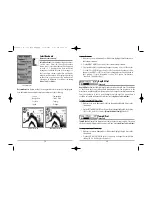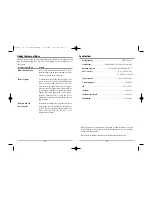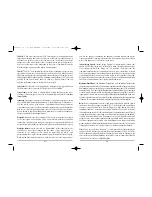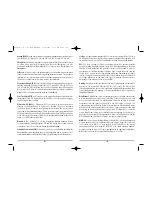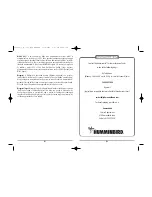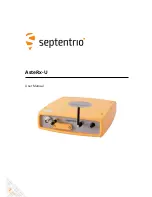
101
Bearing (BRG):
Bearing is the direction to a destination waypoint measured in degrees
from North (i.e. 321°, where 000° is North, 090° East, 180° is South, 270° is West).
Chartplotter:
Chartplotter describes a navigation device that shows Present Position
on a Map, along with Tracks, Waypoints, and Routes. All Chartplotters are also
considered Trackplotters. All Humminbird® GPS Combo units are Chartplotters. See
Trackplotter
.
Cold Start:
Cold Start refers to the procedure that a GPS receiver must perform when
it does not have historical information regarding its current location. This procedure
typically lasts for several minutes, and may be experienced upon first power up of
the receiver, or if the receiver has been moved a great distance.
Course Over Ground (COG):
Course Over Ground is the current direction the boat is
traveling measured in degrees from North (i.e. 321°, where 000° is North, 090° East,
180° is South, 270° is West). When the Course Over Ground is equal to Bearing, the
boat is said to be “On Course” and will arrive at the destination in the most efficient
manner. COG is often confused with Heading. See
Heading
.
Cross Track Error (XTE):
Cross Track Error is the straight-line distance of the boat from
the intended Track. XTE measures how far the boat is off course, and also triggers
the Off Course Alarm. See
Track
.
Differential GPS (DGPS):
Differential GPS is a system to improve the position
accuracy of the Department of Defense GPS through the use of secondary
“correction signals” broadcast from ground stations around the coastal United
States and on some inland waterways. These correction signals are provided by the
USCG and received by an auxiliary Differential Beacon Receiver (DBR) that connects
to the GPS receiver. The advent of WAAS has largely negated the need for the added
expense of a DBR in the United States.
Distance To Go:
Distance To Go is the straight-line distance between Present
Position and the Destination Waypoint. DTG and SOG (Speed Over Ground) are used
to calculate Time To Go. See
Time to Go
and
Speed Over Ground
.
Estimated Position Error (EPE):
Estimated Position Error is a calculation that indicates
the potential position inaccuracy the user may experience due to a variety of GPS
factors which include satellite position in the sky, signal strength and others factors.
102
Fix Type:
Fix Type indicates whether the GPS receiver is providing 2D fix or 3D fix. A
2D fix requires only three satellites and provides only latitude and longitude. A 3D
fix requires four or more satellites, and provides latitude, longitude and altitude.
GPS:
GPS is an acronym for Global Positioning System. GPS provides accurate
position (latitude, longitude, altitude) information virtually anywhere on the earth
through satellite technology and personal receivers on the ground. A series of
geosynchronous satellites broadcast a unique signal toward the earth once per
second. A GPS receiver, such as that included with many Humminbird® products,
receives the signals from these satellites and is able to determine position based on
very slight differences in the time each signal is received and the receiver’s
knowledge of the location of each of the satellites.
Heading:
Heading describes the direction the boat is pointing and is measured in
degrees (i.e. 321°, where 000° is North, 090° East, 180° is South, 270° is West). Due
to wind and waves, the boat is often traveling in a slightly different direction than
it is heading, and therefore Heading is often confused with Course Over Ground. See
Course Over Ground
.
Map Datum:
A Map Datum refers to a particular survey of the earth’s surface that
was referenced when creating a chart (i.e. WGS84). Since the earth is not flat, and
not even consistently round, a mathematical model must be used to translate
coordinates from the sphere of the earth to the flat surface of a chart. This
mathematical model is the Map Datum. Historically, many different Map Datums
have been used around the world to create maps; often a reference to the Map
Datum can be found in the legend of a paper map. It is important to select the
correct Map Datum setting in your fishfinder when comparing GPS position to a
paper chart to avoid slight position inaccuracies. Almost all electronic charts use the
WGS84 Map Datum and therefore, they do not require setting changes.
MMC:
MMC is an acronym for Multi Media Card. An MMC is a postage stamp-sized
memory device used to store electronic data such a maps, waypoints, routes and
other information. MMC is a very rugged format suitable for the marine
environment, but it is not waterproof. The MMC is removable from Humminbird®
products, and can be used in a PC that is equipped with an appropriate card reader.
MMC is the same format that many digital cameras use. See
SD
.
531448-1_A - 363_Man_Eng.qxd 11/9/2005 6:07 PM Page 108




